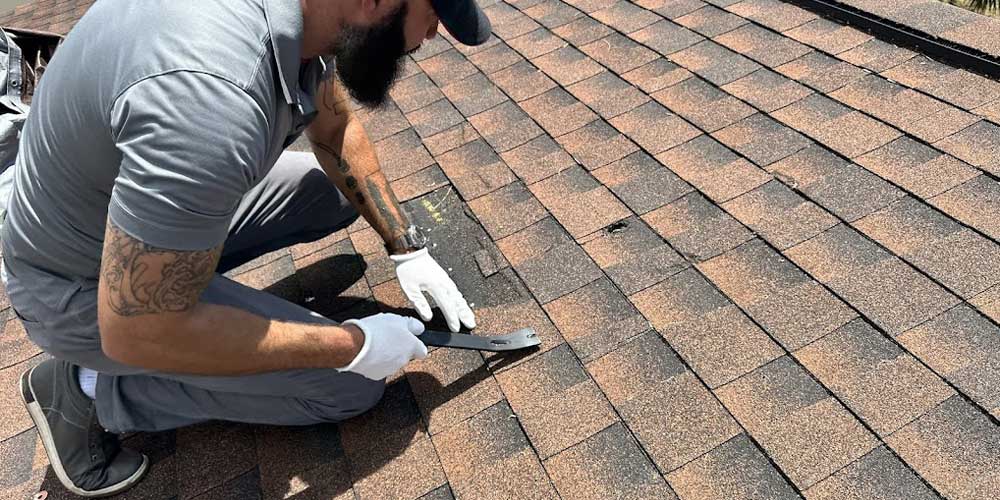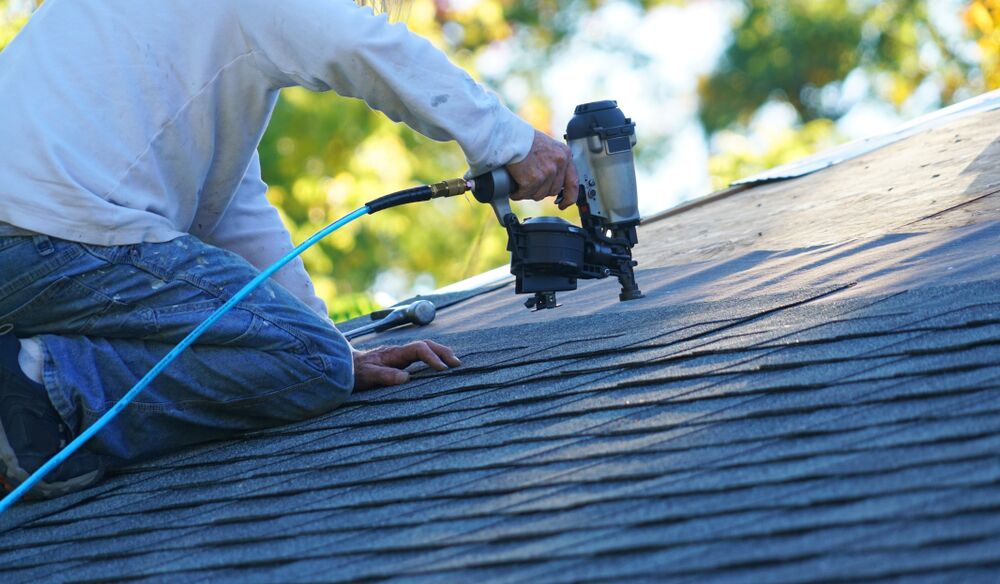Comprehending the Different Kinds Of Roof Coverings: A Comprehensive Overview for Homeowners
With a selection of options-- ranging from the standard gable to the contemporary flat-- each type provides special advantages and obstacles that ought to straighten with the property owner's ecological factors to consider and certain demands. As we check out the complexities of various roofing system kinds, it comes to be obvious that one dimension does not fit all; the right option may amaze you.
Gable Roofs
Saddleback roofs, characterized by their triangular form, are among the most popular roof designs as a result of their simplicity and efficiency in shedding water and snow. This style includes two sloping sides that fulfill at a ridge, allowing for reliable water drainage and reducing the threat of water accumulation. The steep pitch commonly connected with gable roofings enhances their ability to handle heavy precipitation, making them ideal for numerous climates.
Along with their functional benefits, saddleback roofs provide visual versatility. They can be adjusted to various building designs, from conventional to modern homes. The layout can additionally suit extra features such as dormer windows, which improve all-natural light and air flow in the attic room space.
Moreover, saddleback roofs provide enough space for insulation, adding to power effectiveness. Home owners can select from a range of roofing materials, including asphalt tiles, steel, and ceramic tiles, even more boosting modification options.
Despite their advantages, saddleback roofs may need additional assistance in areas prone to high winds or hefty snowfall. On the whole, the gable roof continues to be a popular option because of its blend of capability, durability, and aesthetic appeal.
Apartment Roofs
Level roofs are often recognized for their minimalist style and functional applications, particularly in industrial and business settings (oahu roofing). These roofings feature a straight or almost horizontal surface, which permits easy building and functional room application. While they may lack the visual appeal of pitched roofs, level roof coverings provide various benefits, particularly in city environments where taking full advantage of space is important
One of the key benefits of level roofing systems is their accessibility. Home owners can use the roof covering area for numerous functions, such as roof gardens, balconies, or solar panel installments. Furthermore, level roofing systems are commonly much more cost-efficient to maintain and set up contrasted to their sloped counterparts, as they need less materials and labor.
Usual products made use of for level roofings include built-up roofing (BUR), modified asphalt, and single-ply membranes, each offering distinctive benefits. In general, flat roofings offer as a functional and versatile selection for many homeowners and businesses alike.
Hip Roof Coverings
Hip roofing systems are defined by their sloped sides that assemble on top, creating a ridge. This design is distinctive from saddleback roofs, as all 4 sides of a hip roof incline downwards towards the walls, giving a more steady framework. The angle of the inclines can vary, enabling versatility in architectural aesthetics and capability.
One of the key benefits of hip roofings is their capability to hold up against heavy winds and damaging weather. The sloped surface areas make it possible for better water drainage, lowering the danger of leaks and water damages. Additionally, hip roofings provide increased attic space, which can be used for storage or perhaps exchanged habitable areas.
Nevertheless, building a hip roof covering can be more intricate and pricey than less complex roof types, such as gable roofing systems. The added product and labor associated with producing the inclines and making certain correct architectural stability can bring about higher expenses. Regardless of these drawbacks, several house owners favor hip roofings for their toughness, visual appeal, and capacity for energy performance.
Mansard Roofings
Mansard roofing systems, frequently identified by their special four-sided style, feature two inclines on each side, with the lower slope being steeper than the top. This building design, originating from France in the 17th century, is not only visually attractive yet functional, as it takes full advantage of the usable space in the top floors of a structure. The steep reduced incline permits more clearance, making it a suitable selection for attic rooms or lofts, which can be exchanged living spaces.
Mansard roofs are defined by their flexibility, accommodating different architectural styles, from traditional to modern. They can be constructed with different materials, including asphalt tiles, slate, or steel, giving home owners with a range of choices to fit their choices and spending plans. Furthermore, the style enables the assimilation of dormer home windows, enhancing natural light and air flow in the upper levels.
Nevertheless, it is necessary to consider the possible disadvantages. Mansard roofings might call for more upkeep because of the complexity of their style, and their steep inclines can be testing for snow and rain drainage. Generally, mansard roof coverings incorporate sophistication with usefulness, making them a popular selection among home owners seeking unique architectural functions.
Lost Roof Coverings
As house owners significantly seek simpleness and performance in their building layouts, shed roof coverings have become a prominent option. Identified by a single sloping aircraft, a shed roof presents a minimalist aesthetic that matches various home designs, from contemporary to rustic.
One of the key advantages of a shed roof covering is its straightforward construction, which typically converts to decrease labor and product prices. This design enables for reliable water drainage, minimizing the threat of leaks and water damage. Furthermore, the upright incline provides sufficient room for skylights, boosting natural light within the interior.
Dropped roofings additionally offer flexibility in regards to use. They can be properly integrated into additions, garages, or outdoor structures like sheds and structures. Furthermore, this roofing design can suit numerous roof covering products, consisting of steel, asphalt tiles, and even green roofing systems, lining up with environment-friendly campaigns.
Nonetheless, it is vital to consider regional environment problems, as hefty snow tons may require modifications to the roofing system's angle or structure. Overall, shed more helpful hints roofs offer a sensible and cosmetically pleasing alternative for home owners aiming to take full advantage of performance without jeopardizing design.
Final Thought


Gable roofing systems, defined by their triangular form, are among the most prominent roof covering styles due to their simplicity and efficiency in losing water and snow. oahu roofing. The steep pitch typically connected with gable roof coverings enhances their capability to take care of hefty precipitation, making them suitable for different environments
While they might lack the aesthetic charm of pitched roofings, level roof coverings offer various advantages, particularly in city settings where taking full advantage of area is crucial.
